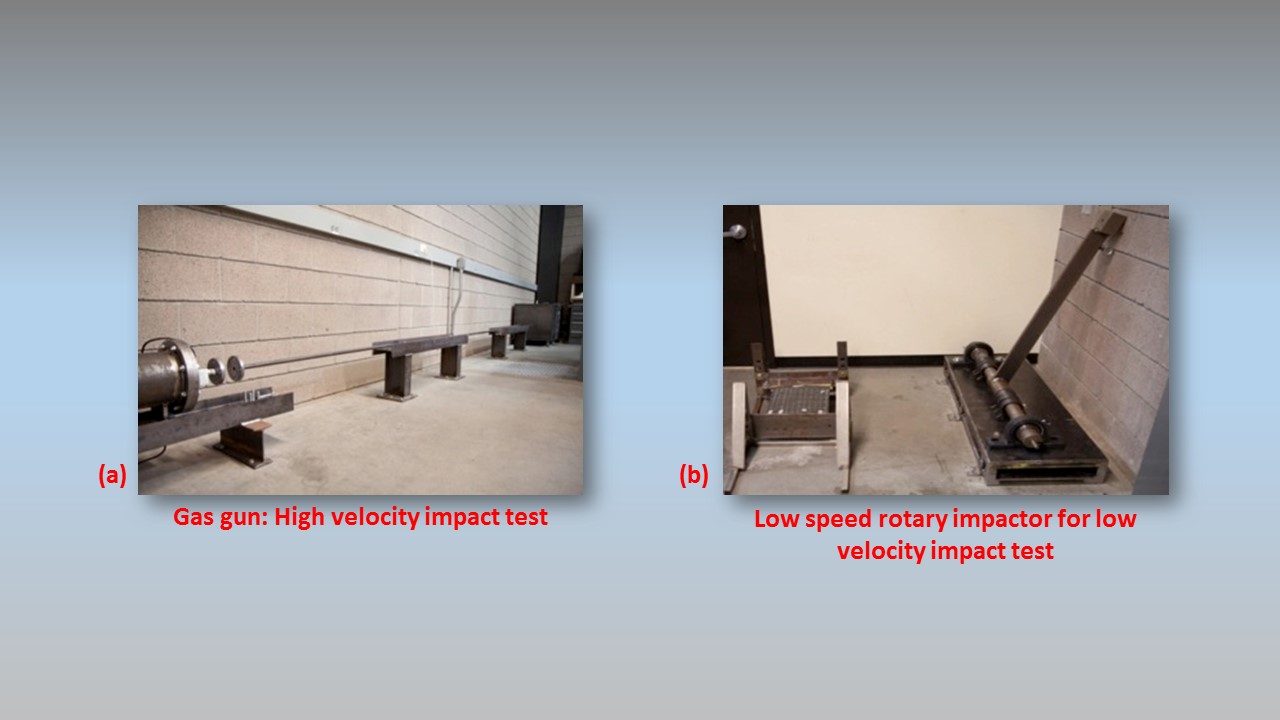Facilities
Experimental facilities
The team has access to a wide range of material fabrication, imaging techniques, mechanical test frames, nondestructive evaluation (NDE) facilities, and computing resources. As Director of the AIMS Center, the university PI has access to the AIMS Service Center.
The test facilities include:
- MTS Planar Biaxial Torsion Fatigue Frame
- Ultra-High Cycle Fatigue System
- Aramis 5M – Micro Digital Image Correlation System
- Uni-axial MTS servo hydraulic Testing machine – 509Kips, 150 kips
- Instron 5985 Load Frame with Thermal Chamber
- Test resources T1000 fatigue frame
- Instron E3000 Thermomechanical Frame
- Zeiss LSM-700 Confocal Microscope
- Scanning Probe Microscopy
- Low and High Velocity Impact Test Equipment
MTS Planar Biaxial Torsion Fatigue Frame
The laboratory features a 100 kN planar bi-axial and 10 kip-in torsional test system from MTS. The unique test system includes six independent precision controlled actuators mounted in-plane and perpendicular to one another. The system allows investigation of the 3D stress states of materials.

Lasur Ultra High Cycle Fatigue System
The laboratory is also equipped with a Lasur ultra-high cycle fatigue systems funded by the DURIP (2015). The system uses a piezo-driven ultrasonic generator to provided testing frequencies up to 20 kHz. This system is also integrated with a Instron-8801 100 kN load frame which provides a greater variety of loading scenarios such as static and cyclic superimposed tensile and compressive loads, both constant and variable amplitudes.
- High cycling frequency of 20 kHz
- Superimposed static & cyclic loadings
- Combined with a 100 kN fatigue frame & in-situ thermal chamber (up to 250 C)
- Applications: advance material with fatigue life of 109 to 1012 cycles
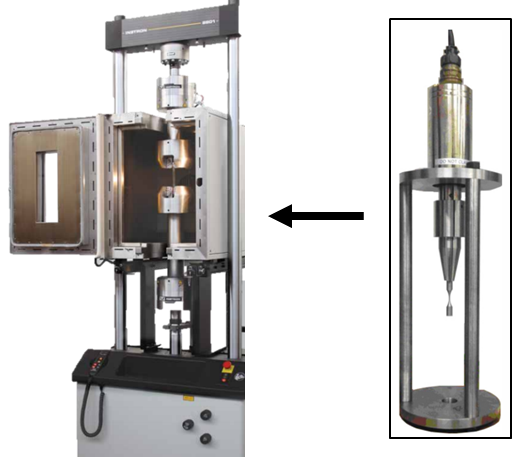
ARAMIS 3D Correlation System
The ARAMIS 3D correlation system utilizing the APX cameras for both static and dynamic measurements is shown in Figure 3. The ARAMIS system became operational in January of 2005 and included completion of a reduced pressure room and personnel training. Test results using the system are shown in Figure 4. The ARAMIS 5M system has fine calibration and adjustment tools which can measure a 3D strain field as low as 1 mm2 with camera resolution up to 2448 x 2050. The ARAMIS 2M system has lower resolution (1624 x 1236).
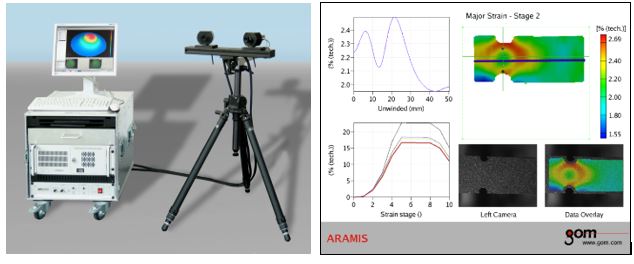

MTS Servohydraulic fatigue frame
The laboratory is equipped with a fatigue test equipment from MTS. The servo-hydraulic MTS frame (Figure 5) has a loading capacity up to 5.5 kips, and the electrical Test Resources frame can be used for smaller loading up to 1 kip. The MTS frame is equipped with hydraulic grips and JIC software for fracture toughness measurements and random loading software for simulating real-time test conditions.
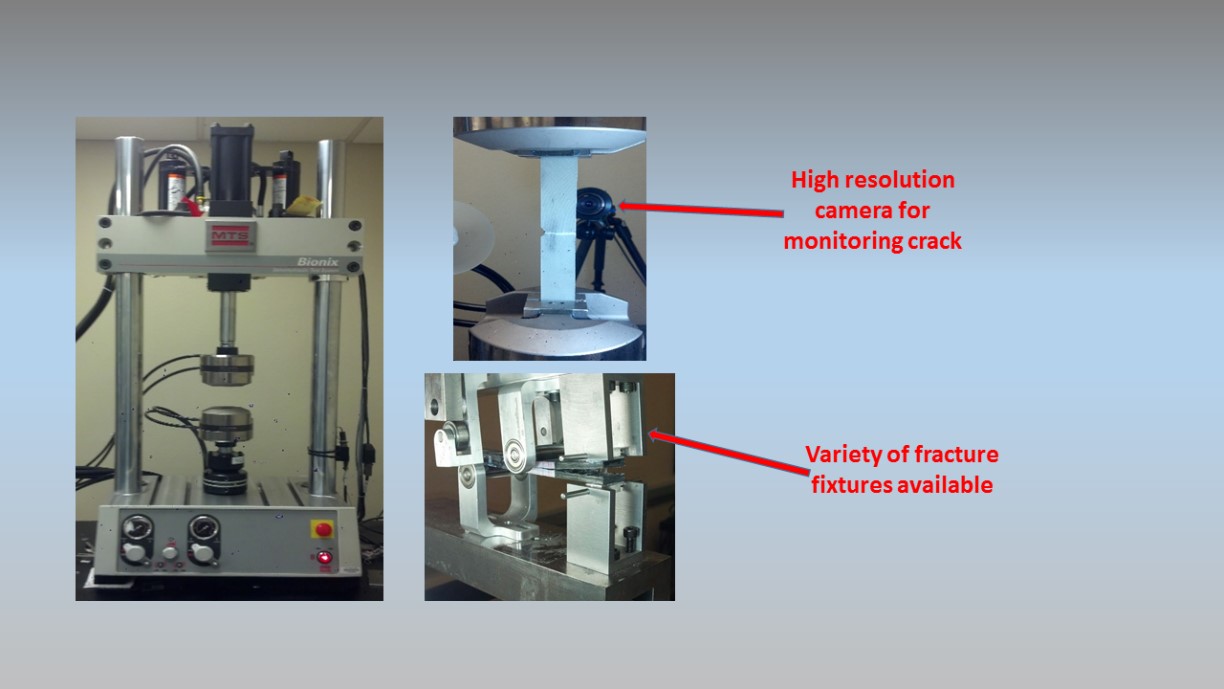
Instron 5985 Frame with Thermal Chamber
The laboratory is also equipped with a 250 kN Instron (model 5985) materials testing system (Figure 6) with a displacement rate range of 5×10-5 to 508 mm/min and a collection of grips compatible with a temperature range of -73°C to 315°C. The Instron test system is equipped with an environmental chamber with a temperature range of -50 to 250°CFor environmental aging experiments, the laboratory is also equipped with a temperature and humidity chamber model BHD-203 with a working volume of 3 ft3. The temperature and humidity ranges are -65°C to 200°C and 20% to 98%, respectively.
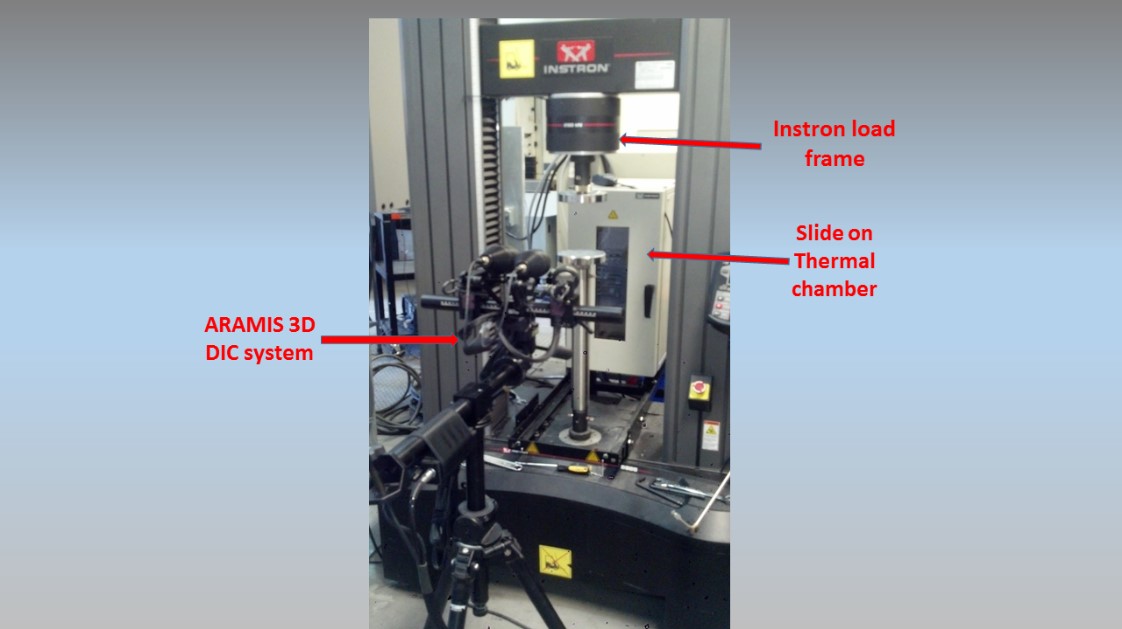
TRI T1000 Fatigue Frame
The Test Resources software includes a monotonic testing package to streamline ramp tests for metals, polymers, and composites, a deflectometer and extensometer to measure displacements, two load cells (50 lb and 1000 lb) to measure small forces or large forces accurately, three and four point bending fixtures, compression platens, tensile grips and many data collection options to assist with data storage.
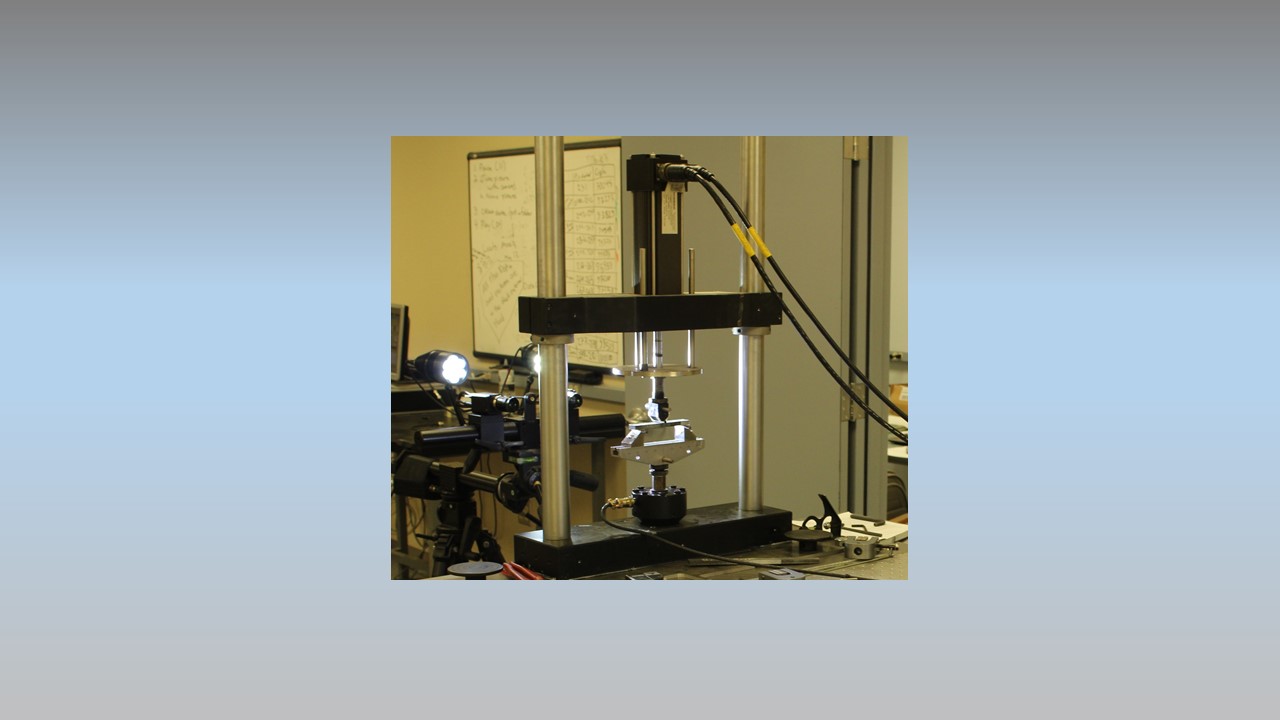
Instron E3000 Thermomechanical Frame
The laboratory is equipped with an Instron E3000 frame with an environmental chamber. This frame is capable of testing materials at loads up to 2100 N and in temperatures ranging from -100 to 350°C. This equipment is suitable to perform thermomechanical static and fatigue testing on polymer based composite specimens with accurate load displacement reading even for small loads.
- Applications: polymer & multifunctional materials
- Dynamic load range of 30 N to 3 kN
- Temperature range from -100 to 350 °C
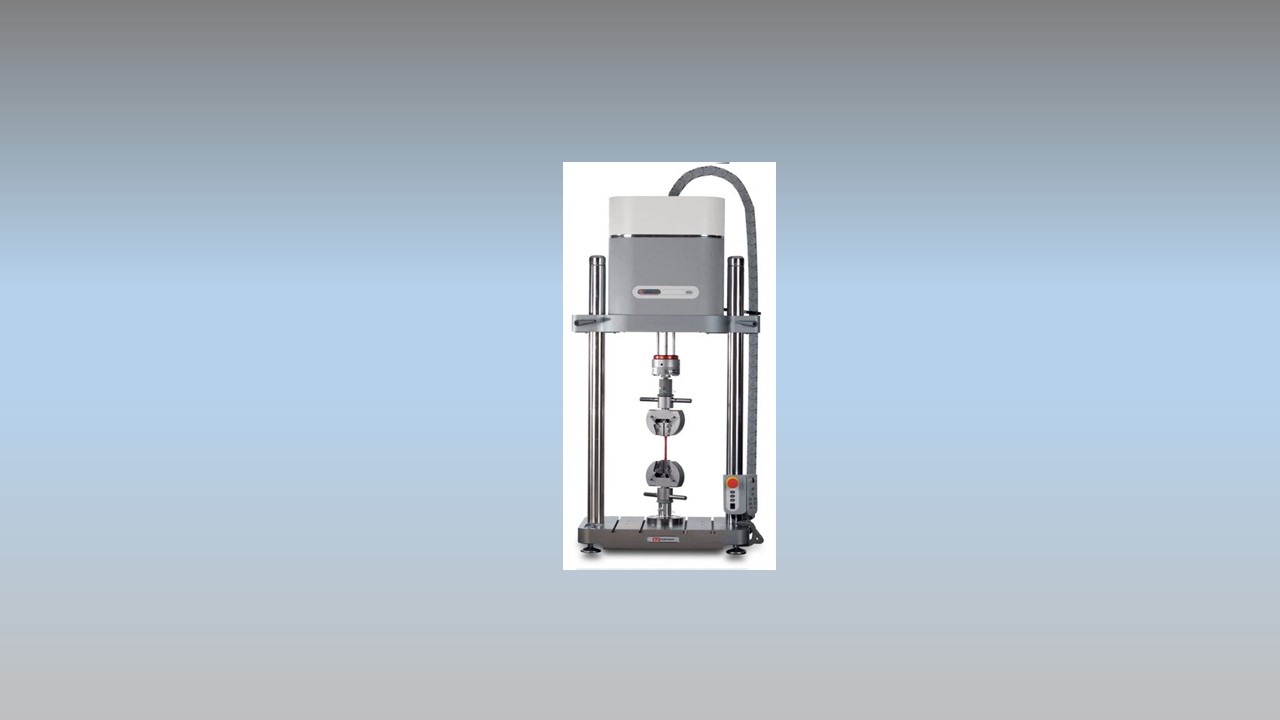
Confocal Laser Scanning Microscope
The laboratory is equipped with a confocal laser scanning microscope (LSM 700) purchased from Zeiss. The LSM has two solid state lasers (405 nm & 488 nm) as well as reflected, transmitted, and fluorescent light capabilities. The optics on the equipment have a variety of lenses up to 100x magnifications and an internal eyepiece magnification of 10x. The software installed for the mounted camera has stitching capabilities and can extract 3D data from the specimen surface.
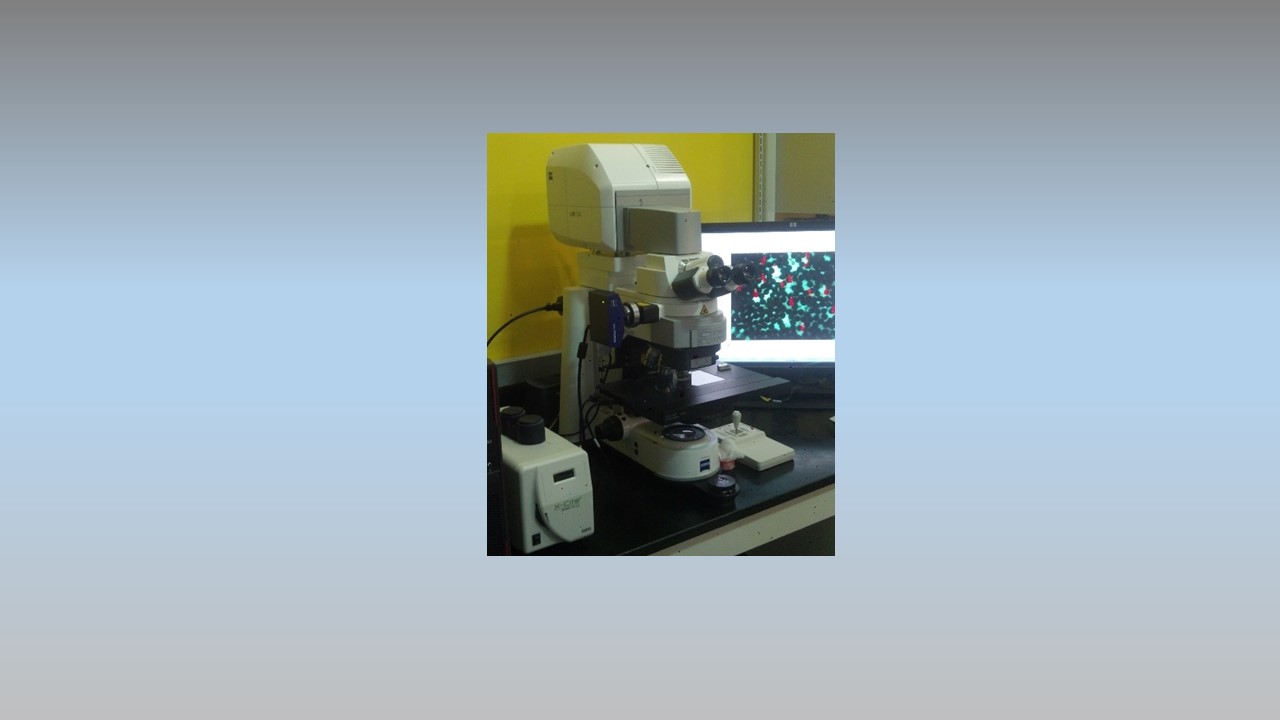
Scanning Probe Microscopy
A MultiView scanning probe microscopy (SPM) 4000 system (Figure 10), featuring high accuracy mechanical, electrical, and thermal property measurements with high spatial resolution in multiple length scales, is used as a novel experimental platform for characterizing the interaction of the nanomaterials with structural composites in a systematic manner. The effects of type, morphology and functionalization of the constituents in nano-engineered composites that manifest at the nano, submicro- and microscale can be studied. By integrating traditional AFM, nanoindentation, electrical measurement module, and thermal measurement module, the novel system allows simultaneous measurements of a wide range of multifunctional material properties with speed and accuracy. The AFM and nanoindentation probes can be operated independently or simultaneously.
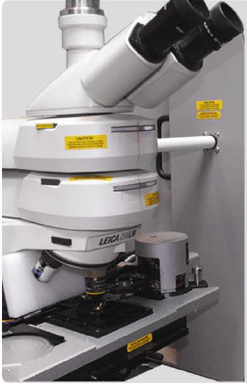
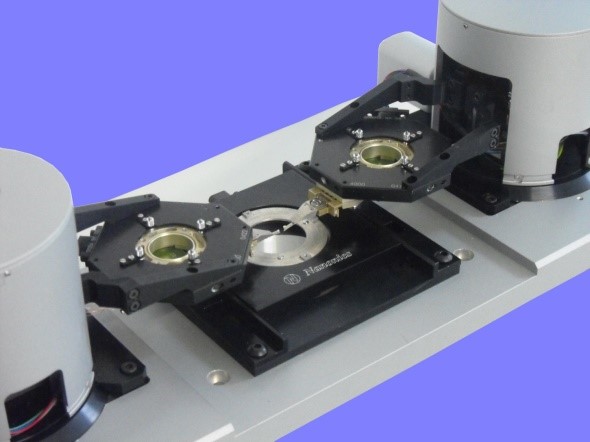
X-Ray Microtomography
SkyScan 1272 3D X-ray Micro-CT allows for 3D microscopy for non-destructive imaging of fine scale internal structure. Scanning up to 75mm object width with 14456 x 3240 pixels in each projection image with reconstruction of 209 Mp slices (2600 slices per scan). Isotropic detail detectability down to 0.35 µm. Phase contrast enhancement for submicron details.
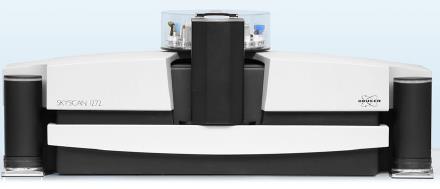
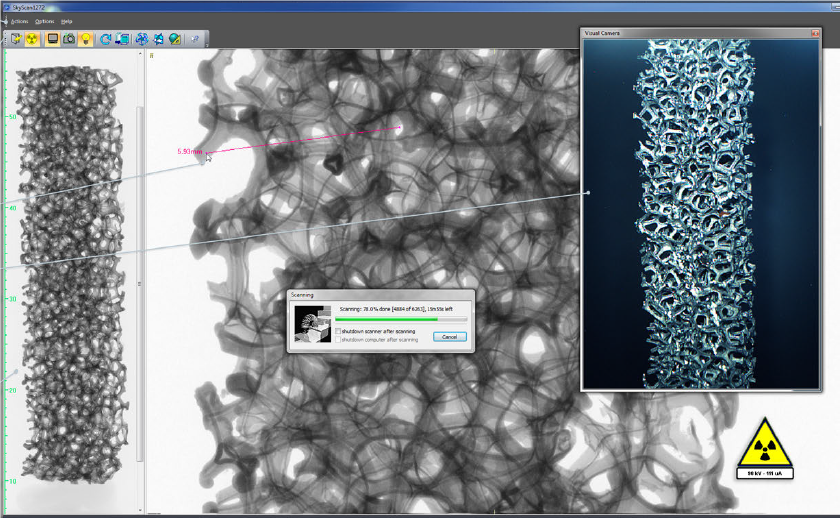
Low and high velocity impact test equipment
The research laboratory is also equipped with low and high velocity impact test facilities: i) a 1500 psi compressed nitrogen gas gun with a ½ in diameter barrel is capable of direct or sabot firing projectiles at speeds up to 700 m/s into a vacuum chamber; ii) a fully instrumented low speed rotary style impact machine capable of up to 10 m/s with varying amounts of energy. Sensors for impact force and displacement are available.
